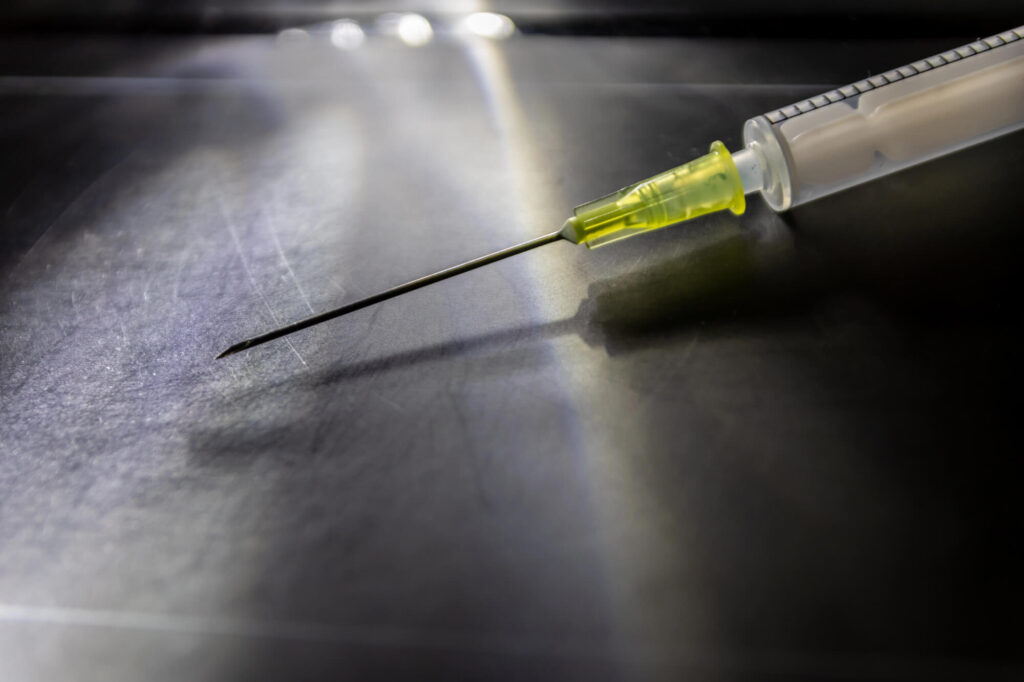
Erectile dysfunction (ED) injections, also known as intracavernous injections or intracavernosal injection therapy, have become a cornerstone of effective treatment for patients who do not respond to oral medications like Viagra or Cialis. These injections are especially useful for post-prostatectomy patients, those with diabetes, or individuals who have experienced deterioration in erectile function due to cardiovascular conditions.
But despite the effectiveness of penile injection therapy, a common concern remains: Are ED injections safe for long-term use? Today, we’ll explore the science behind ED injection therapy, the success rates, potential risks and benefits of long-term use, and how to work with your healthcare professional to achieve reliable, sustainable outcomes—especially if you’re navigating life after sexual erectile dysfunction, prostate cancer treatment, or non-responsiveness to oral medications.
Understanding ED Injections and Their Clinical Role
Penile injection therapy, also known as intracavernosal injection therapy, involves the direct injection of a vasoactive drug mixture into the penile shaft as a treatment of impotence. The most commonly used agent is prostaglandin E1, also known by its pharmaceutical name, Alprostadil. In many cases, an injection of prostaglandin E1 is all it takes, but for most patients with erectile dysfunction, a combination with other medications, such as Phentolamine and Papaverine, is used to enhance vasodilation and efficacy.
These medications work by relaxing the smooth muscles in the penile arteries and blood vessels, causing them to expand. This action increases blood flow to the corpus cavernosum—the erectile tissue of the penis—resulting in a firm, reliable erection that typically occurs within 5 to 15 minutes after injection, regardless of sexual stimulation.
Compared to oral medications like PDE5 inhibitors (e.g., Viagra, Cialis), which require adequate blood flow and sexual arousal to function, injection for erectile dysfunction therapy offers a more predictable and direct response. It is particularly effective in restoring erectile function for patients with erectile dysfunction that is a result of nerve damage or for post-prostatectomy patients and those with vascular insufficiencies who may not respond to pills.
Why Many Patients Chose an Injection for Erectile Dysfunction
Intracavernous injection therapy has become a vital option in the treatment of erectile dysfunction, especially for patients with underlying medical conditions or contraindications to oral medications. These include men with heart disease, diabetes, or those taking nitrates, where drug interactions could pose risks.
One of ICP’s key benefits is its localized action, which minimizes systemic side effects while offering precise control over erection time. Because the medication is injected directly into the target area, there’s no need to rely on metabolic absorption, which can vary widely among individuals. The result is a rigid erection with high treatment efficacy, suitable for sexual activity planning and coordination with a partner.
This is a self-intracavernous injection, so patients are educated on proper dosage and injection technique, including how to sanitize the area with an alcohol swab, handle the medication vial, and avoid complications like air bubbles. With proper guidance from a healthcare provider, many men report improved confidence and sexual spontaneity.
Custom ICP Medications at Boston Medical Group
Boston Medical Group personalizes self-injection therapy by offering custom-formulated solutions tailored to each patient’s needs and medical profile. These include:
- TriMix: A compound of Alprostadil, Papaverine, and Phentolamine, offering a synergistic effect for enhanced blood flow and reduced rate of discontinuation. TriMix is widely regarded for its high success rates and is often used in patients with moderate to severe ED.
- BiMix: Contains Papaverine and Phentolamine, used for patients who may be sensitive to Alprostadil or who experience side effects from it, such as a painful erection.
- QuadMix: A more potent formulation reserved for patients who need an extra boost in efficacy, often used in post-prostatectomy patients or those with persistent sexual erectile dysfunction despite other interventions.
Since this is a self-intracavernous injection, each mixture is delivered in a sterile vial to the patients with full instructions, including the use of a rubber stopper, alcohol wipe, and auto-injection device if needed. Adjustments to concentration, dose, and frequency are made during regular follow-ups to optimize long-term efficacy and reduce complications like priapism or tissue fibrosis.
ICP is not a one-size-fits-all solution—it’s a customizable, evolving therapy. Through guided support and clinical precision, Boston Medical Group ensures patients receive effective and safe therapy for erectile dysfunction, optimized for both immediate results and long-term satisfaction.
Long-Term Safety of ED Injections: What the Research Shows
Intracavernous self-injection therapy for ED is safe and is one of the least invasive therapies that result in almost immediate restoration of erectile function compared to other methods that give you a spontaneous erection.
Numerous long-term studies and clinical reviews confirm that intracavernous injection therapy is a safe and effective treatment for erectile dysfunction, even with continued use over many years. A notable 8-year study observed high long-term efficacy and low complication rates among intracavernosal injection patients, especially when therapy was customized and closely monitored by a healthcare professional.
Prostaglandin E1, used in erectile dysfunction injections, has shown consistent success in increasing blood flow by relaxing smooth muscles in the penile blood vessels. The resulting erections are both physiologically robust and controllable, making the therapy highly adaptable for patients with cardiovascular disease or post-surgical conditions, such as radical prostatectomy.
Long-term observational data suggest that even older adults and those with compromised vascular health experience meaningful improvements in erectile function, with success often maintained across a median follow-up time of several years. Patients also report sustained sexual activity and improved intimacy when injections are used as prescribed.
Common Side Effects and Clinical Management
Like all medical treatments, penile injection therapy carries potential risks. Fortunately, most side effects are minor and manageable when injections are administered correctly under professional guidance.
Minor Side Effects (typically resolve on their own):
- Mild swelling at the injection site
- Small amounts of bruising or tenderness
- Temporary painful erection that subsides naturally
- Localized discomfort immediately minutes after injection
Major (Rare) Side Effects (require medical attention):
- Prolonged erection (priapism): An erection lasting longer than four hours that does not subside without intervention
- Fibrosis: Scar tissue formation from repeated injections in the same area, potentially affecting erectile function
- Infection: If the injection technique is poor or the alcohol swab protocol is not followed
- Bleeding or hematoma: Occasional if blood vessels are accidentally punctured
Proper self-injection therapy techniques—including site rotation, use of an auto-injector or fine-gauge needle, and correct sterilization with an alcohol pad—significantly reduce the risk of priapism or other complications. Patients receive hands-on instruction to manage risks proactively and sustain long-term use without adverse events.
Role of the Healthcare Provider in Safe Long-Term Use
Successful management of erectile dysfunction through injections relies heavily on clinical oversight. A healthcare provider plays a crucial role in both the initiation and ongoing adaptation of therapy. At Boston Medical Group, every patient begins treatment with a supervised titration process to determine the optimal dose of vasoactive drugs, such as Alprostadil or TriMix formulations.
Providers also monitor blood pressure, evaluate interactions with other medications, and assess erection response time. This ongoing calibration ensures that injections deliver adequate erections while minimizing side effects or therapy dropout.
Education is another key pillar of penile self-injection therapy. Patients are taught how to identify early signs of loss in erectile function, understand the rate of discontinuation metrics, and manage dosage frequency based on real-world outcomes. Adjustments are often made based on tests and patient feedback, including partner satisfaction, emotional readiness, and injection confidence.
This comprehensive, physician-led approach dramatically lowers the attrition rate and fosters a high level of long-term satisfaction, even among high-risk populations.
When and Why Treatment Plans May Need Adjustment
Although intracavernous injection therapy offers high treatment efficacy and long-term satisfaction for many patients, it’s not uncommon for individual needs to change over time. Whether due to evolving health conditions, relationship dynamics, or treatment fatigue, periodic reassessment ensures that the treatment for erectile dysfunction remains both safe and effective.
Signs Your Treatment May Need a Refresh
Over time, certain clinical or quality-of-life indicators may signal the need to revisit your penile injection therapy protocol. Monitoring your response and reporting issues to your healthcare provider is critical in avoiding complications and improving outcomes.
Key signs to watch for include:
- Reduced erectile rigidity or shortened duration: If you no longer achieve adequate erections or the results vary, your current vasoactive drug mixture (e.g., TriMix or BiMix) may require dose recalibration or reformulation.
- Discomfort at the injection site: Repeated use of the same injection site can cause irritation or early signs of fibrosis. Rotating sites and reassessing needle gauge or auto-injector use can alleviate this.
- Development of penile curvature: This may be an early warning sign of Peyronie’s disease, often resulting from scar tissue formation and a reason to modify the self-intracavernous injection protocol immediately.
- Emotional or relational barriers: A lack of partner engagement, increased sexual activity anxiety, or a loss of confidence can reduce dependent satisfaction rates and lead to a higher attrition rate if left unaddressed.
A comprehensive follow-up—including SHIM (IIEF-5) reassessment, review of lifestyle changes, and potential lab work—can help determine the most appropriate next step in any treatment of impotence.
Exploring Additional or Alternative Therapies
When signs of diminished effectiveness appear or lifestyle changes affect your readiness, several supportive therapies can be introduced to complement or replace current injections. These include:
- Shockwave Therapy (Low-intensity extracorporeal shockwave therapy): Stimulates angiogenesis and blood vessel regeneration, improving erectile function attributable to vascular issues.
- Platelet-Rich Plasma (PRP): Regenerative injection therapy that may help restore erectile function by promoting tissue healing and collagen formation.
- Vacuum Erection Device (VED): These vacuum erection devices are non-invasive mechanical solutions that enhance blood flow and can assist with achieving spontaneous erections for sexual intercourse without drugs.
- Hormone Replacement Therapy (HRT): Especially for men with low testosterone, HRT can improve libido, energy levels, and baseline erections, supporting the effectiveness of other treatments.
- Penile Implant Surgery (Inflatable Implants): Penile implants, or penile prostheses, are a surgical solution involving the insertion of prosthetic devices into the penis, offering a lasting remedy for individuals with severe erectile dysfunction, often resulting from physical injuries or trauma, such as spinal cord damage.
In some cases, it may be appropriate to reintroduce or combine oral medications like PDE5 inhibitors alongside injections for a synergistic effect. This combination therapy for erectile dysfunction may lower the required dosage of each and reduce side effects while maintaining a high rate of treatment response.

Supporting Long-Term Efficacy of ED Injections Through Lifestyle Management
Finally, lifestyle factors play a massive role. While medical therapies like intracavernous self-injection can provide excellent short and long-term efficacy, a healthy lifestyle is needed for sustainable results.
The body’s vascular and hormonal systems significantly influence erectile function, meaning that even the best penile self-injection therapy can be undermined by poor lifestyle choices or unmanaged health conditions. Optimizing your lifestyle is key to extending the benefits of therapy for erectile dysfunction and ensuring consistent, satisfying outcomes.
Cardiovascular Health and Blood Flow Optimization
Because erectile function is closely tied to vascular health, maintaining strong blood vessel integrity is essential. When the cardiovascular system is working efficiently, blood flow to the penis improves—enhancing erection time, firmness, and response to injection therapy.
Key strategies to support vascular health include:
- Diet: Focus on foods rich in antioxidants, omega-3 fatty acids, and nitric oxide boosters. A Mediterranean-style diet supports arterial flexibility and improves endothelial function, which helps with spontaneous improvement in erectile rigidity.
- Exercise: Aerobic activities like walking, cycling, and swimming improve blood pressure, reduce inflammation, and enhance baseline erections over time. Resistance training also promotes healthy testosterone levels.
- Supplements: L-arginine, citrulline, and beetroot extract may help increase nitric oxide availability, enhancing blood flow and the effectiveness of self-injection therapy.
When these factors are optimized, patients often report improved treatment satisfaction rates, physicians see lower dropout rates from the treatment, and may even reduce their required injection dosage.
Emotional and Relational Health
Psychological and relational factors significantly impact the success of treatment for erectile dysfunction. Stress, anxiety, and emotional disconnection from a sexual partner can reduce arousal and performance—even when intracavernosal injection therapy is physiologically effective.
Supporting mental and relational wellness includes:
- Managing anxiety around sexual activity: Cognitive Behavioral Therapy (CBT) or mindfulness can reduce performance pressure and improve arousal response.
- Communication with your partner: A motivated partner and open conversations about timing, expectations, and treatment can lead to more fulfilling experiences.
- Sex therapy or counseling: Behavioral therapy can address root causes of sexual erectile dysfunction not linked to physical health and help couples navigate emotional dynamics.
When emotional wellness is prioritized alongside physical treatment, many patients report a substantial increase in erectile function and relational intimacy.
Avoiding Risk Factors That Impact Injection Safety
Certain habits and substances can directly undermine the effectiveness and safety of penile injections. These factors can impair blood flow, cause vascular damage, and reduce the body’s responsiveness to vasoactive drugs.
Avoid or manage the following:
- Alcohol: Excessive consumption disrupts testosterone production and blunts vascular response, reducing erectile function and increasing the dropout rate from injection therapy.
- Smoking: Tobacco damages blood vessels, increasing the risk of vascular disease and reducing treatment efficacy over time.
- Poor sleep: Sleep deprivation increases cortisol levels and disrupts hormone cycles that support sexual health.
- Medication interactions: Antidepressants, beta-blockers, and certain antihypertensives can diminish erectile response or create complications when combined with injection therapy. Always review all prescriptions with your healthcare provider.
- Recreational drug use: Substances such as cocaine or marijuana can interfere with erection time, vascular dilation, and neurological arousal—jeopardizing both safety and satisfaction.
By managing these modifiable risk factors, patients dramatically improve their odds of achieving and maintaining high long-term satisfaction with therapy for erectile failure.
Boston Medical Group’s Long-Term Support System
While intracavernous injection therapy is clinically powerful, its real strength lies in consistency, customization, and medical oversight. Boston Medical Group is committed to ensuring every patient receives not just the right medication but the right long-term support system to sustain erectile function, manage risks, and adapt therapy to changing health needs.
Physician Monitoring and Patient Education
Self-injection therapy works best when paired with expert supervision. At Boston Medical Group, patients receive comprehensive care that goes far beyond the initial prescription. Each patient begins with an in-depth consultation and remains under the guidance of a healthcare provider throughout their journey.
Key elements of Boston Medical Group’s medical monitoring include:
- Routine follow-ups: Physicians conduct a SHIM (IIEF-5) analysis, which is a regular assessment of erectile rigidity, erection time, and overall treatment efficacy. These follow-ups allow for the identification of potential side effects—such as painful erections, minor bruising at injection sites, or early signs of tissue fibrosis.
- Titration and dose adjustments: Medications are recalibrated based on evolving clinical response. This ensures optimal performance while avoiding overtreatment or complications like priapism.
- Review of co-medications and interactions: Patients taking antihypertensives, antidepressants, or other cardiovascular drugs undergo routine evaluations to monitor for any interactions with vasoactive drug mixtures used in penile injections.
- Patient education: Instructional materials, live demonstrations, and a patient information leaflet are provided to ensure proper use of injection tools (e.g., auto-injectors, alcohol wipes, rubber stoppers) and adherence to hygiene standards—reducing the risk of infection or injury.
This close physician-patient partnership not only enhances long-term efficacy but also minimizes the rate of discontinuation commonly seen in other forms of treatment for erectile dysfunction.
How Telemedicine Enhances Safe Access
Boston Medical Group’s telemedicine platform provides nationwide access to personalized care, ensuring that expert support is never more than a video call or message away. This is particularly vital for patients managing chronic conditions, those in rural areas, or men balancing treatment with demanding schedules.
Telemedicine benefits include:
- Remote consultations: Patients can meet with experienced healthcare professionals from the comfort and privacy of home, review progress, adjust prescriptions, and discuss concerns—without the need for travel.
- Prescription refills and treatment continuity: All medications, including the injection of prostaglandin E1 blends or custom formulations like TriMix and BiMix, can be delivered directly to the patient’s home.
- Treatment tracking tools: Digital follow-ups help monitor erectile function domain scores, patient-reported outcomes, and SHIM (IIEF-5) analysis over time. This facilitates proactive adjustments and supports personalized care plans.
- Responsive support: Patients have direct access to staff for urgent questions, such as how to manage prolonged erections or identify signs of adverse reactions.
With Boston Medical Group, patients don’t just receive penile injections—they gain a complete, responsive support system that prioritizes safety, convenience, and sustained improvement in erectile function attributable to expert care.
ED Injections Are Safe with the Right Strategy
With appropriate oversight, the long-term safety of ED injections is well-documented, boasting a low complication rate. For men looking for effective treatment of erectile dysfunction and go back to enjoying spontaneous sexual activity, reducing dependency on oral medications with variable outcomes, penile injection therapy presents a proven path forward.
Proper education on administration techniques and potential side effects, like priapism or prolonged erections, is crucial in ensuring patient safety and enhancing treatment efficacy. Personalized care that considers individual patient needs plays a vital role in optimizing outcomes.
Boston Medical Group exemplifies this approach by combining extensive experience with proprietary medications and tailored support systems. Their comprehensive strategy ensures patients not only receive effective ED treatments but also maintain ongoing health and well-being.
Frequently Asked Questions
Are ED injections safe for long-term use?
Yes. When properly prescribed and monitored by a qualified healthcare provider, intracavernous injections like TriMix and other Boston Medical Group compounds are considered safe for long-term use. They have low complication rates when protocols are followed correctly.
Can ED injections cause priapism or painful erections?
While rare, priapism (a prolonged erection lasting more than 4 hours) or a painful erection can occur. These risks are minimized with proper dosing, injection rotation, and physician monitoring. Patients are educated on managing symptoms and when to seek help.
Do ED injections interfere with blood pressure or other medications?
Typically, no. ED injections act locally on penile blood vessels for the sole purpose of achieving sexual intercourse and are less likely to interact with systemic medications like those affecting blood pressure. However, it’s essential to review all medications with your health care professional.
How often can I safely use penile injections?
This varies based on the individual. Most patients use injections 2–3 times per week, with careful monitoring of erection time and tissue response. Long-term use remains safe when guidelines are followed.
What makes Boston Medical Group’s approach safer?
Boston Medical Group tailors drug combinations to your physiology offers pain-free auto-injectors, and provides telemedicine support to track your treatment for erectile dysfunction over time—maximizing both safety and satisfaction for you and your sexual partner.


